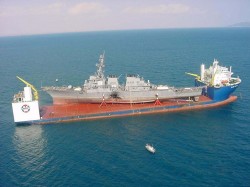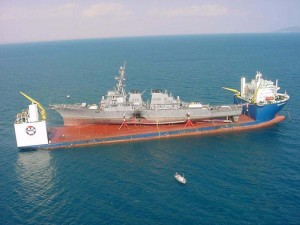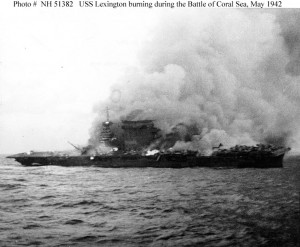USS Fort Worth (LCS-3) just completed her acceptance trials today. Though a small step in itself, it is yet  another reminder that this class is coming soon to a fleet near you. Just considering the Freedom-class variant, LCS-5 and -7 are under construction and funding for LCS-9 and -11 was approved in March. Though any fresh news about this class roils the waters of debate in the naval blogosphere, let’s step back and examine where the class has been, and where it is going.
another reminder that this class is coming soon to a fleet near you. Just considering the Freedom-class variant, LCS-5 and -7 are under construction and funding for LCS-9 and -11 was approved in March. Though any fresh news about this class roils the waters of debate in the naval blogosphere, let’s step back and examine where the class has been, and where it is going.
LCS is not streetfighter. This much is true. Critics point to the ship’s fitness to defeat anti-ship cruise missiles and other anti-access/area denial (A2/AD) threats, small crew size and its resulting effect on damage control, lack of proven mission modules, and a host of other design and cost factors as reasons to reduce or discontinue the LCS program.
These critics rightly identify tactical weaknesses inherent in the LCS platform. Why do we need to reconsider their analysis?
One good reason is that strategy should drive tactics. LCS is a poor power-projection platform, but is that the strategic role we want or need to ask of it?
The fact that states are often unsure about the intentions of others drives foreign policy and strategy-making. The same tools we produce to defend our interests could also be used to attack. Many smart people think this uncertainty is the reason why wars occur. Whether this is actually the case or not, it’s clear that China believes in a Realist, zero-sum view of the world. So, you ask, what does this have to do with LCS?
The persistent uncertainty that things-that-go-boom produce can be resolved in part if military technologies can be clearly identified as either offensive or defensive. A rifle is a pretty poor example of this principle: it is equally suited to attack enemy forces as it is to defend friendly forces. A tomahawk missile, on the other hand, is designed primarily to attack. So it is with many missile systems. It makes me think back to The Hunt for Red October: “Would you characterize this as a first strike weapon, Dr. Ryan?” Think of it another way: if I drove the pickup truck I recently bought (used, of course) down your street, would you believe that it’s only for self-defense?
LCS is a defensive technology – it is defensively useful by allowing the United States to secure the seas from lawlessness and engage with allies and partners to help prevent China from expanding their influence through “soft power” means. Months ago, Rear Admiral Rowden called this idea “flags on halyards.“ LCS is therefore the ideal platform to park near China – it allows us to maintain influence in the region while preventing China from claiming that the US Navy is a menace to their security. LCS would indeed be a poor choice if the US strategy against China was one of power projection. However, it’s not immediately clear to this humble blogger that’s true. Other strategies have been proposed which rely less on our ability to “kick down the door” and fight China a la WWII. This latter strategy would incur huge costs in lives and treasure. LCS represents an alternative strategic vision – one that paradoxically transmutes tactical weakness into strategic strength.
Streetfighter was designed to aid the Navy in it’s power projection role – a role that dominated strategic and force planning in the late 1990s. Rather than compare LCS to an idea designed for a different strategic era, the first consideration should compare it to the strategic requirements of today. LCS fills a niché for a forward-deployed vessel that can advance American interests and influence without undue provocation. The United States can and should provide naval forces for sea control and power projection, but LCS may help ensure that we don’t need to place the entire battle force in harm’s way.
Tactical strength does not always translate into strategic usefulness. We would do well to remember that, as the “Cooperative Strategy for 21st Century Sea Power” says: “preventing wars is as important as winning wars.”
The opinions and views expressed in this post are those of the author alone and are presented in his personal capacity. They do not necessarily represent the views of U.S. Department of Defense, the U.S. Navy, or any other agency.







